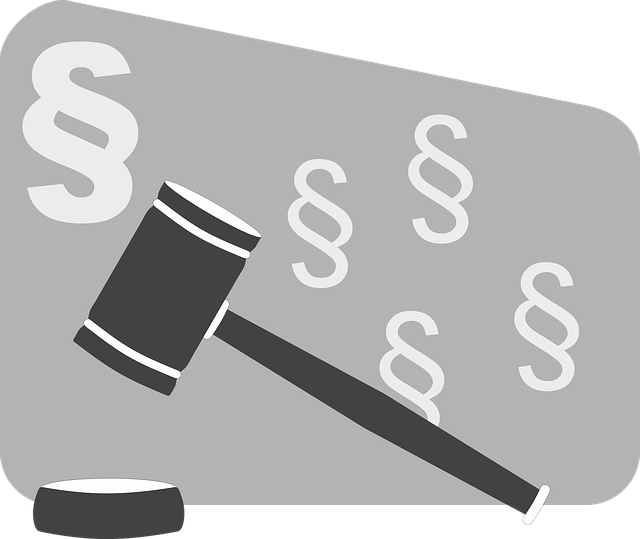Successful strategies in defamation litigation involve a multi-faceted approach for both plaintiffs and defendants in white-collar crime cases. Key elements include robust fact-finding, contextual analysis, and understanding business interests to mitigate reputational harm. Plaintiffs gather evidence of false statements, their publication, actual malice (for public figures), and resulting damages. Defendants employ tactics like denying falsity, claiming truth, and arguing fair comment, with counterclaims adding complexity. Damages and remedies are crucial for compensating victims and rehabilitating reputations, focusing on monetary and non-monetary remedies to achieve justice.
Delve into the intricate world of criminal law with a focus on defamation cases. This comprehensive guide explores key aspects, from understanding the legal definitions and elements of a defamation claim, to successful strategies for filing and proving these cases. We also dissect defense mechanisms, common arguments, and counterclaims, while highlighting damages and remedies available to victims. Discover expert insights into successful strategies in defamation litigation, essential knowledge for anyone navigating this complex area of law.
- Understanding Defamation Law: Definitions and Elements of a Claim
- Successful Strategies for Filing and Proving Defamation Cases
- Defense Mechanisms in Defamation Litigation: Common Arguments and Counterclaims
- Damages and Remedies: Compensating Victims and Restoring Reputation
Understanding Defamation Law: Definitions and Elements of a Claim

Defamation law plays a crucial role in protecting individuals and businesses from false and harmful statements that damage their reputation. At its core, defamation involves making a false claim about someone or something that causes harm to their standing in the community. To establish a successful defamation claim, several key elements must be present. These typically include a false statement made with actual malice, fault, or negligence; publication of the statement to a third party; and demonstrable damage to the victim’s reputation.
Understanding these elements is vital for both plaintiffs and defendants in cases involving white-collar and economic crimes, where reputations can be heavily scrutinized. Successful strategies in defamation litigation often involve meticulous fact-finding, careful analysis of the context in which statements were made, and a deep understanding of the respective business interests at stake. By navigating these complexities, legal professionals can help their clients achieve justice while mitigating potential reputational damage.
Successful Strategies for Filing and Proving Defamation Cases

In navigating Successful Strategies for Filing and Proving Defamation Cases, understanding the nuances of defamation litigation is paramount. The first step involves meticulously gathering evidence to establish the essential elements of defamation, including a false statement, publication, actual malice (in cases involving public figures), and damages. Legal professionals can employ strategies such as deposing witnesses, requesting relevant documents, and engaging in expert witness testimony to strengthen their client’s case.
Additionally, successful advocacy often hinges on strategic filing and service of legal papers. Timely and proper service ensures the case moves forward without procedural hurdles. Moreover, crafting compelling legal arguments that resonate with judges or juries is crucial. Prioritizing clear communication, presenting a coherent narrative, and highlighting the defendant’s responsibility can lead to winning challenging defense verdicts. Ultimately, these successful strategies aim for a complete dismissal of all charges, fostering fairness within philanthropic and political communities.
Defense Mechanisms in Defamation Litigation: Common Arguments and Counterclaims

In defamation litigation, the defendant often employs various defense mechanisms to challenge the plaintiff’s claims. Common arguments include denying the statements were false or defamatory, asserting truth as a defense, and claiming fair comment or opinion in public discourse. Counterclaims are also prevalent; these may involve allegations of libel or slander by the defendant against the plaintiff, adding another layer of complexity to the case.
Successful strategies in defamation litigation for defendants often revolve around demonstrating the good faith expression of opinions or honest misstatements. General criminal defense tactics can be effective, particularly in showing reasonable care and lack of malicious intent. Achieving extraordinary results in such cases may require a thorough understanding of the facts, precise legal arguments, and a compelling presentation to either resolve the matter outside of court or persuade a jury trial.
Damages and Remedies: Compensating Victims and Restoring Reputation

In criminal law cases, especially those involving defamation, damages and remedies play a crucial role in compensating victims and restoring reputations. Successful strategies in defamation litigation often involve demonstrating the extent of harm caused by false statements or publications. This may include monetary damages to cover losses incurred, such as legal fees and reduced business opportunities, as well as non-monetary remedies like injunctions to prevent further defamation.
A comprehensive approach may involve a combination of tactics tailored to each case. For corporate and individual clients alike, the goal is to secure a complete dismissal of all charges by presenting robust evidence that disproves the allegations. This can be achieved through meticulous legal argumentation, strategic disclosure of relevant information, and effective communication of facts that underscore the innocent nature of the accused. Ultimately, these strategies aim to restore reputations, protect business interests, and ensure justice is served.
Criminal Law Cases, particularly those involving defamation, require a deep understanding of legal principles and effective strategies. By grasping the definitions, elements, and damages associated with defamation, individuals and legal professionals can navigate these complex cases successfully. Implementing successful strategies for filing and proving claims, while also recognizing common defense mechanisms, is key to achieving justice and restoring reputations. This comprehensive guide highlights these aspects, providing valuable insights into Successful Strategies in Defamation Litigation.






